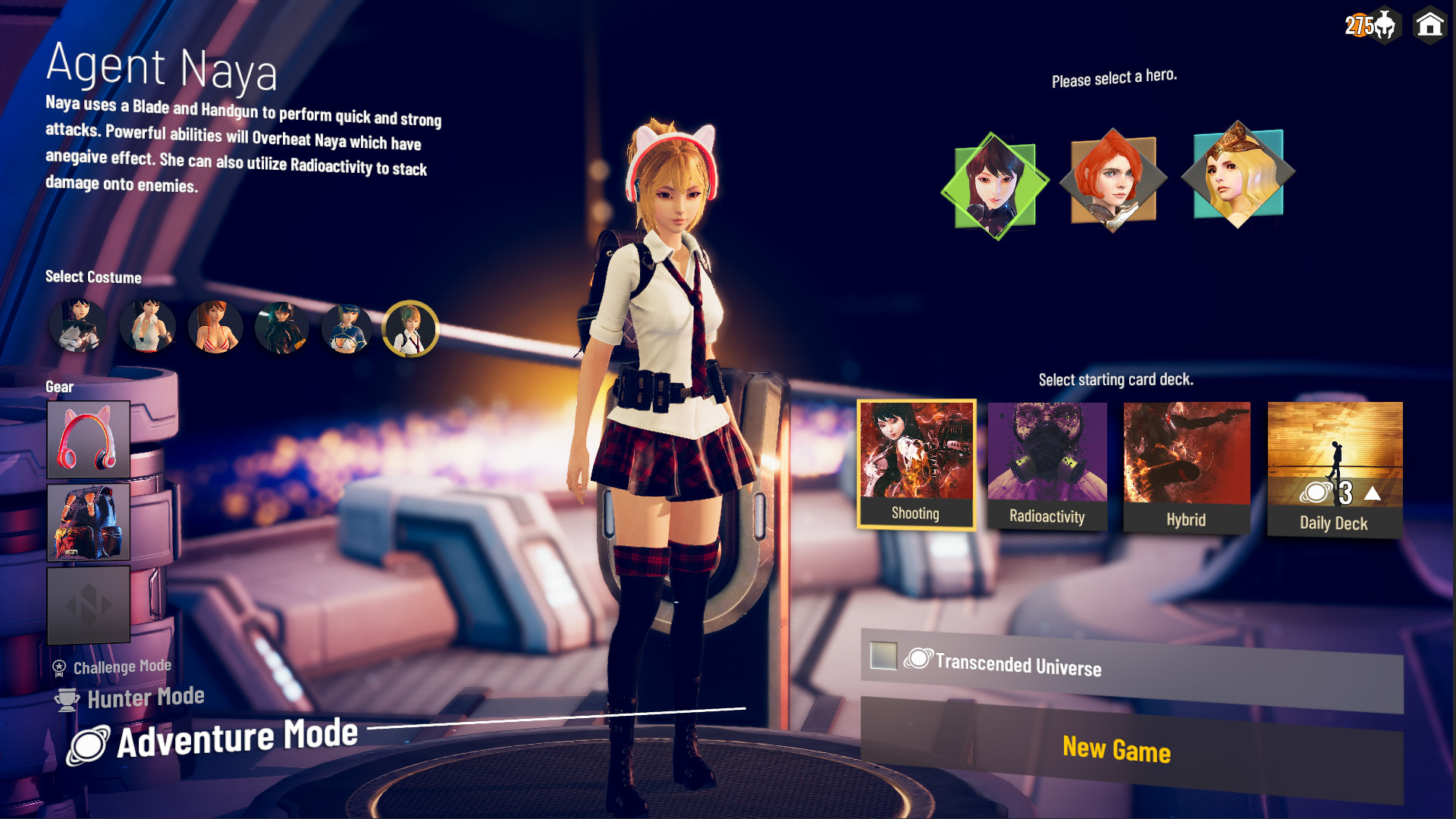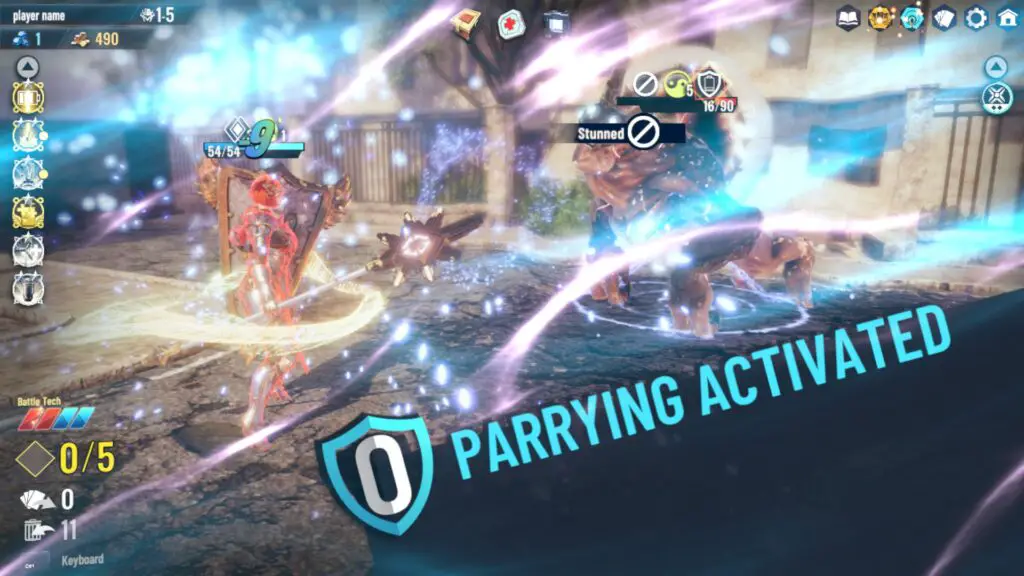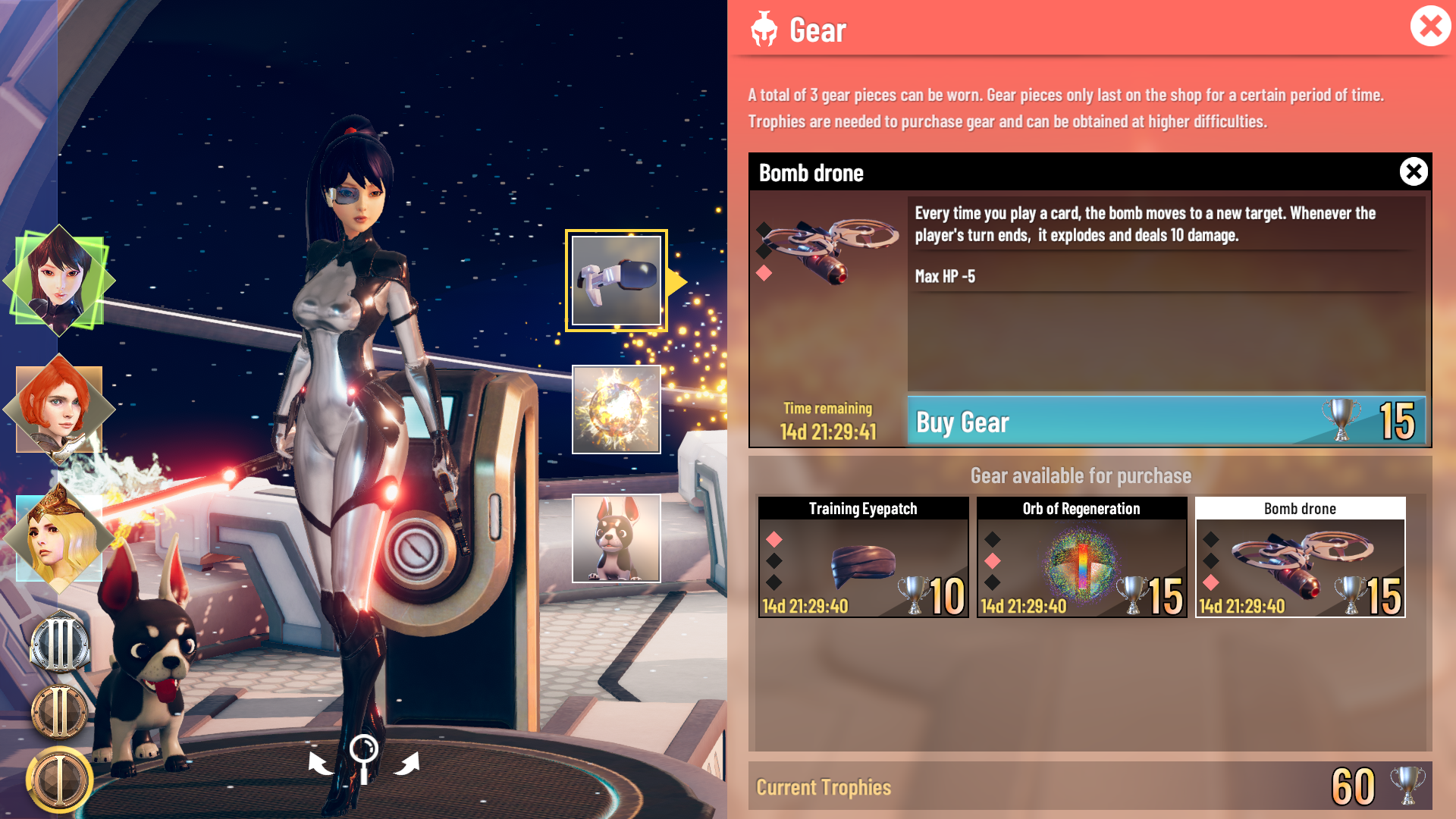OUR RATING 7.5/10
GAME OVERVIEW
Neoverse is about humanity becoming too technologically advanced and started messing about with time and space in search of new worlds. Eventually, the multiverse was discovered, which resulted in them breaking time and space, creating the Neoverse – a new type of universe where different worlds overlapped with their own world.
The game doesn’t really delve much into the game’s storyline though you do get a little bit of text which scrolls on the main menu and a nice cut scene when you first start a new game.
Neoverse is an interesting roguelike deck building title where you get to venture as one of three different characters. Each with their own unique playstyles and decks which you’re gonna have to learn and master in order to defeat the wide variety of enemies that you face.
GAMEPLAY
Heading into the game, you will select your character but as is usually the case most things are locked, including two of the three characters and additional decks. You have to beat a few bosses to open up more options. Aside from the distinct appearances each character in the game comes with their own unique play styles and decks.
To start, you will have the sleek looking Naya the Agent who wields a neon katana and pistol. Her deck focus around mechanics that allow you to stack radiation onto enemies which bypasses the defenses and deals damage at the start of every turn.
Naya also gets a bunch of different cards with no mana costs that shoot her enemies. On the other hand, using these also builds overheat, dropping cards into her deck which deal damage to her. So you need to use other cards to keep your overheat stacks under control.

Moving on next to the heavily armoured Clarie the Paladin. Her deck focus on healing herself, punishing enemies for attacking her and draining the life from them healing her in the process. As with other characters, each of the deck focus more on one of these aspects giving her multiple playstyles.
With the priest deck, you’re going to be generating faith stacks to heal yourself and punishment stacks to return damage whenever enemies attack you. While the vampire deck on the other hand, contains cards which build vampiric stacks healing you with every attack you perform.

Finally, we have Helena the Summoner. She calls mythical creatures to aid her in battle. Helena uses command stacks by playing certain cards. This enables her to order these guardians to perform abilities dealing damage to single or multiple opponents or shielding herself from harm.
The gameplay with Helena focuses on switching between these guardians on the fly, depending on how the battle is going.

Once you’ve picked your preferred character and decided on a deck, you can then set off on a new journey to start. Only adventure mode will be unlocked at the beginning. You will then need to work your way through three areas, each containing five stages.
Prior to starting a stage, you get to select from one of three battles. Each of these presents a mission, offering rewards for completing their objectives including things like skill points, gold items, or cards. As well as healing a certain percentage of your health or allowing you to upgrade cards to higher star ratings that increases their effects.

If you’ve played card battle games before, Neoverse features a familiar concept of expending your mana, seen as an orange diamond to play the cards in your hand which are drawn at random from your deck. Each card has a specific mana cost, denoted by the number in the orange diamond on the cards themselves.
In each battle, you’ll face between one and three opponents and after expending all of your mana, your turn is over and the enemies get to perform their actions. You’re able to see what an enemy is about to do in their turn by hovering your cursor over the icon beneath them. This helps you to forward plan for their actions during your current turn battles.
You and the enemy take turns to attack and defend until either you lose all of your hit points, at which point you get a chance to attempt the battle again, or you kill all of the enemies for which you are rewarded with some gold, skill points, a new card and occasionally an item.

Cards come in four main types, indicated by the colour of the card and this is rather important.
You have blue defensive cards which generate shield stacks seen above your character, and these absorb points of damage from incoming enemy attacks. Red attack cards allow you to direct attacks towards single or multiple opponents and often come with additional status effects such as radiation or piercing, which bypasses enemy armor or others which reduce outgoing enemy damage.
The third type of card are purple instant cards which are generally utility cards. The call upon or enhance other cards. Finally, you have yellow constant cards which provide various beneficial effects to your character. These persist through the current battle. There are also white hindrance cards that are usually put into your deck by enemies and they generally have a variety of negative effects on your character.

The colors of the cards are so important because above your mana meter, you have something called “battletech” which features a series of coloured segments indicating the order in which cards must be played to activate it. Doing so triggers a combo enabling your next card to deal double damage. But messing up the chain resets the counter and presents you with a different set of colours to match.

The first of these is called Precision. This rewards you with additional gold for killing enemies and occurs when you deal the exact amount of damage required to kill an enemy. The second and possibly the most important gameplay mechanic you’re going to want to master is called Parrying. The parry effect triggers when your shield stacks block the same amount of damage delivered by an enemy attack. Successfully parrying will lock down an enemy making it unable to perform any actions next turn. This is especially useful when you’re facing multiple opponents or further on in the game, when enemies are throwing a ton of hindrance cards.

All throughout the game, you’ll accumulate gold which can be spent at the shop in between battles. Here you can purchase new cards to build up your deck with items which can be activated in battles. Providing various benefits or additional skill points, along with the ones earned from battles. You can also spend them to unlock skills, many of which are unique to each character and provide things like additional hp, mana or passive buffs for the rest of the game.
Beating the more challenging boss enemies found in the fifth battle of each area also rewards you with trophies. You can use these in the character select menu to unlock equippable items that provides you with additional buffs.

So in each run of adventure mode, the battles that you face are randomly selected providing plenty of replayability. While your first few runs probably won’t prove overly challenging, after completing the game with a character, you unlock the transcended universe which allows you to select an additional modifier – increasing the difficulty but providing more rewards.
In addition to adventure mode, you also have Hunter Mode. This allows you to select a bunch of cards to add to your starting deck before embarking on a mission to complete a series of 20 battles in a row.
Lastly, you have Challenge Mode. This lets you select one of your previously completed decks to pit against the most challenging enemies in the game. However, each time you start it this mode, you have to pay with trophies.

PROs, CONs and OVERALL GAMING EXPERIENCE
While you do get a few hints about how to play the game in your first few battles, it doesn’t really feel like they did a good enough job of explaining everything you need to know before starting. So you’re going to have to pick things up as you go along, especially with the card mechanics for each hero.
The deck building mechanics in general, has some great depth to them. It’s good how each character offered a different style of gameplay and there are plenty of options as the game went on to build your deck in the direction that you wanted.

The variety of enemies in the game was also good, with each set of enemies presenting their own challenge and strategies to beat. In Challenge Mode, it was a bit of an odd game concept to have to pay each time you pick this mode. You will end up not having enough since generally, players will choose to spend all of your trophies for character items.
But as with all games, there are elements of luck involved and you might occasionally feel underprepared for the enemies that you’re up against. Thankfully, these occurrences are very few and most fights can be easily beaten with some clever strategizing.

When it comes to visuals, the game looks pretty decent although texture resolution has obviously took a hit and at times it did look like someone had been a little overzealous with the sharpness filter in some areas.
Audio-wise, there are some nice sound effects for enemy and character actions, and abilities. And though pretty limited, the game’s soundtrack wasn’t too bad either with some nice relaxing menu music and thumping drum beats to accompany battles.

Neoverse is a very solid deck building game with some enjoyable combat mechanics and plenty of variety if you’re into the genre. You must be prepared to learn as you play and don’t expect too much from the game’s storyline. Its price may be a little too high for those who are still on the fence with this one. You can get Neoverse Trinity Edition from the Switch EShop $24. Alternatively, the game’s also available on Xbox and Steam.
When it comes down to whether or not Neoverse is worth picking up we’d say if you’re a fan of deck building, rogue-like play, you’ll likely have fun playing this game.
